Transcending boundaries: How the arts are redefined on NUS campus
June 18, 2025
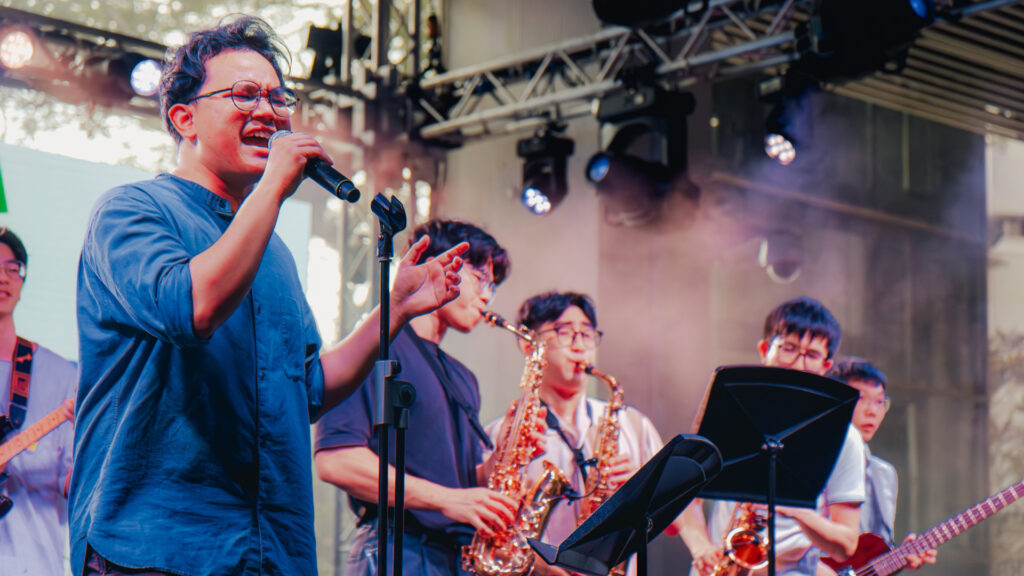
Imagine an arts experience shaped around you — whatever your interest or skill level.
That is the spirit underpinning Arts For All, a university-wide framework initiated by the NUS Office of Student Affairs (OSA) in late 2023. It aims to reshape how students experience the arts, lower barriers to entry, and encourage participation at all levels – whether as a conceptual thinker, a casual explorer, or a curious onlooker appreciating the arts from the sidelines.
“The Arts for All framework will allow students of different aptitudes and interests to find a place to experience the arts,” Ms Ebelle Chong, who heads OSA’s Centre for the Arts (CFA) team, said. “From ground-up initiatives to taking a performing arts course as a credit-bearing course, these opportunities allow a student to plot his or her own arts journey during their undergraduate years.”
CFA anchors this vision through two mainstay arts programmes– third space, and NUS Arts Festival, which put Arts for All in strong action throughout the academic year.
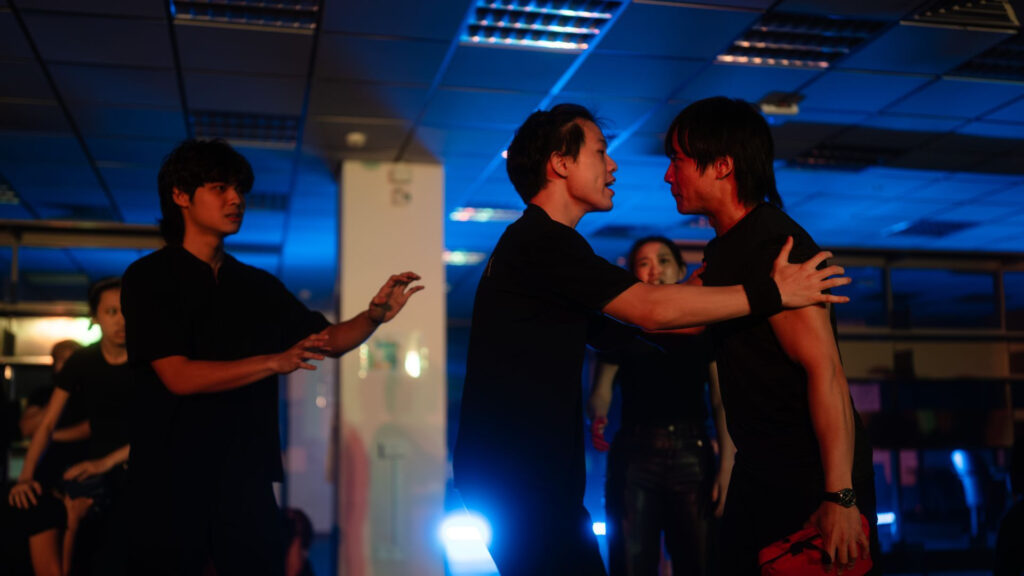
Pushing the boundaries of art-making
Launched in Academic Year 2024/25, third space is a refreshed arts presentation platform that succeeds the long-running ExxonMobil Campus Concerts series. Exploratory in concept, many of its projects carry a reflective or social message from their student creators. They were often staged in unconventional spaces on campus, such as nature spots, communal areas, and transitory spaces.
A standout example was I(n) Nature, a two-part, site-specific performance which explored the relationship between people and trees amidst shifting urban landscapes. Featuring text, movement, and visual installation, it blurred boundaries between genres and challenged the conventions of where art can, and should, take place.
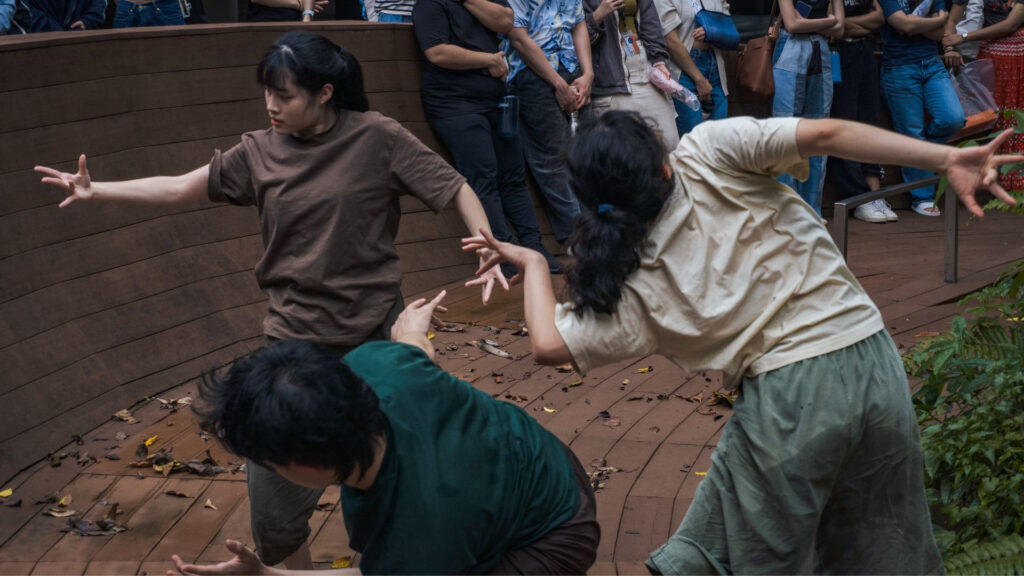
“I(n) Nature doesn’t fit neatly into a single genre. Sometimes it looks like dance, sometimes theatre, so we refer to it as a performance art piece,” said its creators, n:ow arts, a collective of five NUS students. n:ow arts has the distinction of being third space’s first artist-in-residence — a move that signals deeper support for student-led experimentation and a growing pipeline of interdisciplinary projects to come.
Uniting creative minds through interdisciplinary projects
The interdisciplinary nature of projects is also a hallmark of NUS Arts Festival. The Festival, which made its debut in 1998, returned in February 2025 after a year-long hiatus. More than half of the 30 festival programmes featured collaborations, many of which were unprecedented pairings in NUS.
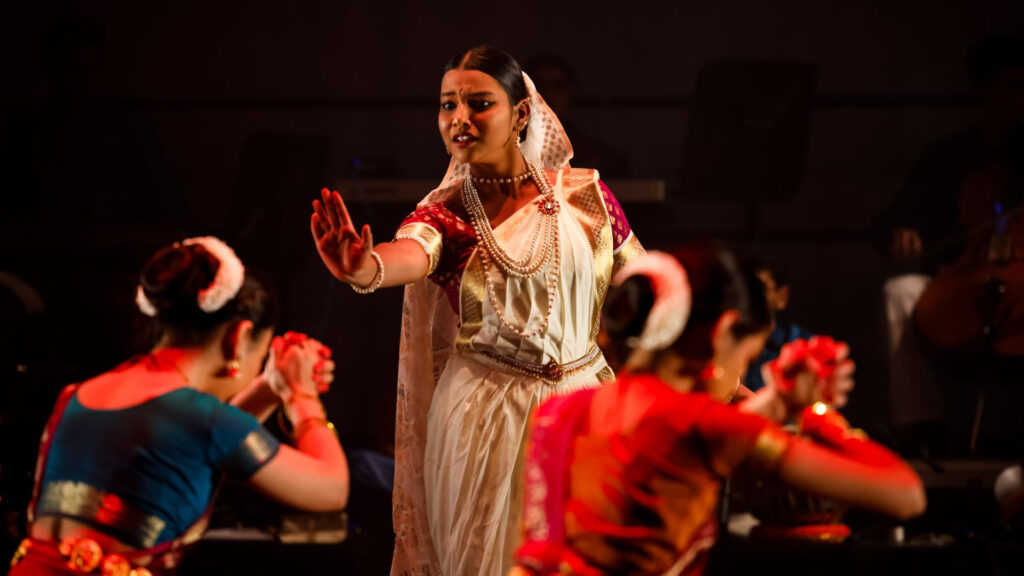
One such production was Nirnayā: In Every Choice, A Legacy, presented by NUS Indian Dance and NUS Indian Instrumental Ensemble.
“This was the first time we collaborated with another NUS student group to put up a full-scale production. The interplay of Indian classical dance and music was instrumental in our presentation of the stories of four Indian mythology characters,” said Pemmasani Prabakaran Rashmeta Sai, Year 2 NUS College of Design and Engineering student and Dance Captain of NUS Indian Dance.
Collaborating across different art forms pushes student groups to step outside their usual creative processes, requiring them to understand unfamiliar artistic languages and find common ground. The result is often fresh perspectives and unexpected synergies, such as the Strings and Reeds: A Meadow in Melody performance which brought together the NUS Guitar Ensemble, NUS Harmonica and guest musicians from NUS Angklung Ensemble.“I learned that classical guitar is a much more versatile instrument than I thought. The blend of the sounds from other instruments was really interesting. It just also taught me that music is more than what we are used to,” said Izz Muhammad Bin Ahmad, Concertmaster of NUS Guitar Ensemble and Year 2 student at the NUS College of Humanities and Sciences.
Living spaces, creative places
The spirit of collaboration extends beyond performances. Outside CFA’s office sits the Living Arts Lab—a co-created space designed with and for students, featuring student-made puppets from a craft workshop held as part of third space.
“We wanted to reimagine the foyer as a space that connects students with CFA– a place for ideas, conversations and community,” River Chua, Programme Manager of third space, said. “Students love the neon sign, which has given the space a vibrant identity.”
The Lab will continue to evolve with each academic year, shaped by the students who gather, create, and find belonging there. For the upcoming semester, CFA has engaged guest artist Kelly Limerick to work with students in a large-scale crochet installation for the Living Arts Lab.
Bridging core and co-curricular through creation
Beyond transforming physical spaces, the Arts for All framework also bridges the academic and co-curricular realms, enabling students to translate classroom learning into public-facing creative works.
That was the case for The Waltz at Lover’s Garden, a site-specific dance performance first conceived by Communications and New Media students Danny Lim En Hwa, Gabriel Lim Zhi Heng, Shawn Chan, and Phoebe Tan Le Yi. Their idea began as a semester project for NM3245 Managing Arts and Cultural Events, a course that equips students with practical skills in programming, production, and communications for the arts.
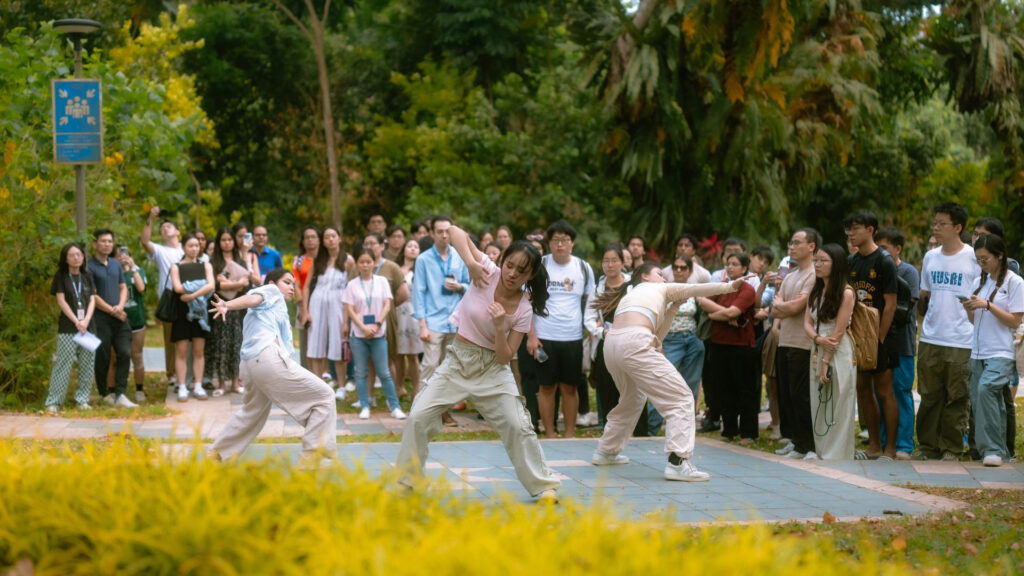
Impressed by the group’s concept, a narrative dance piece exploring the arc of a romantic relationship, Dr Soh Kai Ruo, lecturer from the Department of Communications and New Media at NUS Faculty of Arts and Social Sciences, encouraged them to take it beyond the classroom. CFA connected the team with contemporary dance group, NUS Dance Synergy, and the project took on new life as both a third space and NUS Arts Festival feature. What followed was a collaborative process that brought together different disciplines, perspectives, and ways of thinking, which inspired and stretched everyone involved.
“There was uncertainty when we first started collaborating, as we were unfamiliar with how to engage talents who were our peers. However, through continuous discussions with the NUS Dance Synergy team, and the guidance of CFA Manager, River Chua, the entire planning process went smoothly,” Danny said.
His team concentrated on creative direction and production logistics, while their collaborators from NUS Dance Synergy drew inspiration from the layout of Lover’s Park, a green enclave tucked behind NUS Central Library. The space earned its moniker from its reputation as a popular dating spot as far back as several decades ago, which lent layers of meaning to the emotional arc of the performance.
“The tables that were tucked away in different corners, winding paths, and all these overgrown plants and trees at Lover’s Park,” said Year 2 Faculty of Arts and Social Sciences student Renee Chia, Co-Director and Choreographer of the project. “We realised we could use the space to present the different points of view in the relationship.”
Learning about the arts, on and off stage
While Danny and Renee’s project was a one-off collaboration, other students experience the arts through longer-term academic pathways. Since Academic Year 2023/24, four NUS Arts Groups– NUS Chinese Dance, NUS Chinese Orchestra, NUS Symphony Orchestra, and NUS Wind Symphony– have been offering credit-bearing courses. These semestral courses integrate structured learning with performance, enabling students to develop artistic discipline, teamwork, and production awareness, for academic credit.
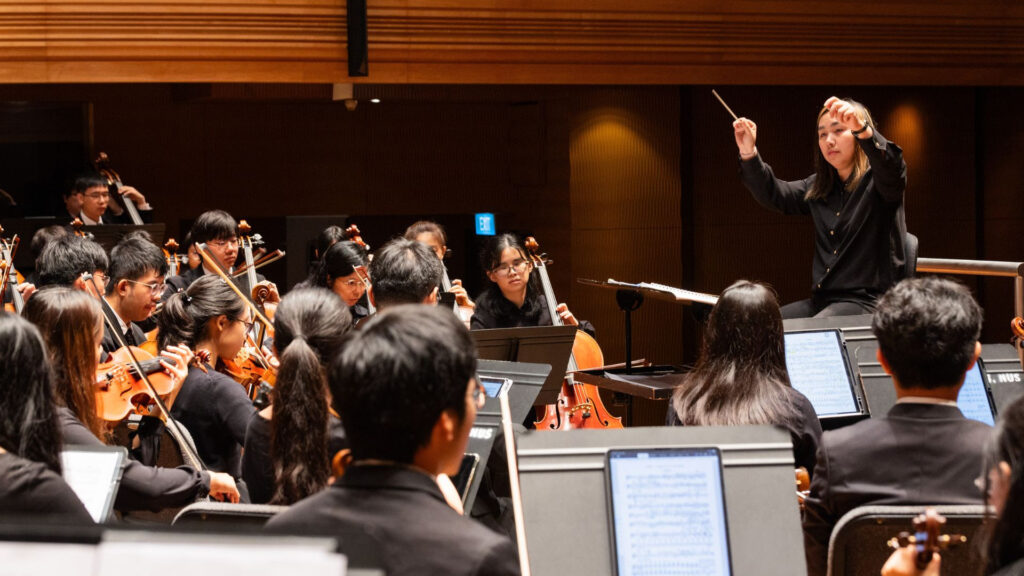
For Year 2, NUS College of Design and Engineering student Chia Min Shen, of the NUS Symphony Orchestra, this meant approaching the NUS Arts Festival as both a performer and a course participant. A key highlight was collaborating with Mr Jin Ta, Flute Principal of the Singapore Symphony Orchestra, on the premiere of Life of a Rice.
Beyond rehearsals, Min Shen handled production logistics— liaising with fellow musicians, conductor, soloist, venue owner and crew on the technical setup and logistics. The experience shifted his perspective on what it means to be a musician.
“We weren’t just putting on a show—we were part of something bigger. It challenged how I think about music and taught me how much planning, teamwork and support go into making a performance truly work.”
With each student-led production, cross-disciplinary partnership, and reimagined campus space, Arts for All is not only expanding access, but also rewriting the story of the arts at NUS. The changes may be recent, but the momentum is unmistakable.
“These changes excite me,” said Ebelle. “Given the opportunity, students have the capacity to learn, to grow, and to become advocates of the arts. What’s great is that they’re bursting with ideas and initiatives. With the support to try new things, we’re seeing the next generation of arts leaders begin to take shape – by the students, about the students, and for the students.”

